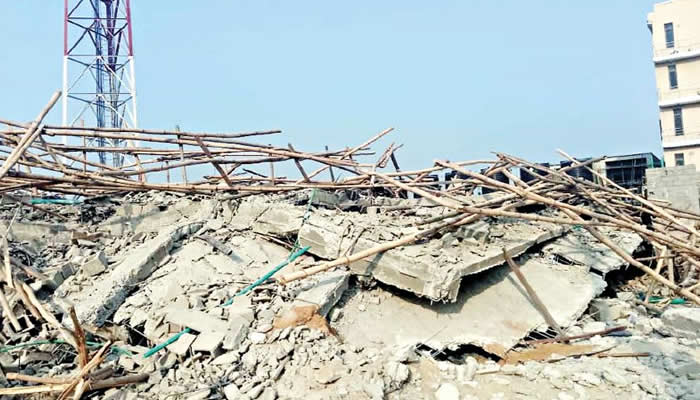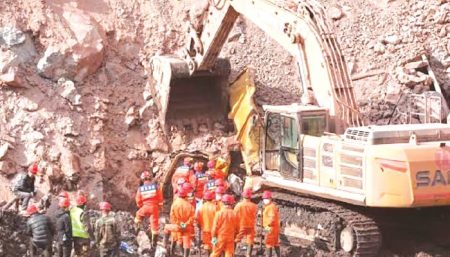The pervasiveness of building collapse incidents in Nigeria paints a grim picture of infrastructural safety and regulatory oversight. Between October 1974 and January 2025, a staggering 1,595 lives were lost in 640 reported building collapses, a testament to persistent systemic failures. The Building Collapse Prevention Guild’s data reveals a disturbing trend of recurring tragedies, highlighting the urgent need for comprehensive reforms across the construction industry. The sheer volume of incidents underscores the vulnerability of citizens and raises serious questions about the efficacy of building codes, enforcement mechanisms, and professional standards. This analysis delves into the geographical distribution of these collapses, the temporal trends, and the contributing factors that have fueled this recurring crisis.
Lagos State emerges as the epicenter of this crisis, accounting for over half (55.15%) of all recorded building collapses. This disproportionately high number points to the particular challenges faced by the state, likely stemming from rapid urbanization, high population density, and potentially compromised construction practices. Abuja, the Federal Capital Territory, follows with 4.37% of the incidents, indicating that the problem is not confined to Lagos but extends to other urban centers. Anambra, Oyo, and Kano complete the list of the top five states with the highest number of collapses, further emphasizing the widespread nature of this issue. Interestingly, several states, including Taraba, Bayelsa, Gombe, and Yobe, recorded their first building collapses only recently, in 2022, suggesting that the problem may be expanding to previously less affected areas.
The temporal distribution of building collapses reveals intriguing patterns. While 1971, 1975, and 1981 saw no recorded incidents, the years following paint a different picture. The year 2020, despite the COVID-19 lockdown and reduced construction activity, witnessed 45 collapses, with Lagos accounting for a significant portion. This suggests that even during periods of relative inactivity, underlying structural issues and lax enforcement persist. 2022 marked a grim peak with 62 incidents nationwide, the highest recorded number, again disproportionately affecting Lagos. 2023 and 2024 continued this unfortunate trend, with 52 and 47 collapses respectively, solidifying Lagos’s unenviable status as the most affected region.
The recurring nature of these tragedies underscores the critical need for a multi-pronged approach to address the root causes. While the available data highlights the geographical and temporal distribution, a deeper understanding of the contributing factors is crucial for effective intervention. These factors likely include inadequate building codes and regulations, weak enforcement of existing laws, the use of subpar building materials, and a lack of qualified professionals overseeing construction projects. Corruption, bribery, and a culture of impunity may also contribute to the problem, allowing substandard construction practices to flourish.
The recent incident in Lekki, Lagos, tragically exemplifies these systemic failures. The collapse of a building under construction, resulting in two fatalities and six injuries, highlights the vulnerability of construction workers and the potential risks posed to surrounding communities. While prompt rescue efforts mitigated the immediate impact, the incident underscores the urgent need for proactive measures to prevent such tragedies from occurring in the first place. The subsequent demolition of the collapsed structure serves as a stark reminder of the human cost of these failures.
The Building Collapse Prevention Guild’s data provides a crucial foundation for evidence-based policymaking. The detailed statistics on the location, frequency, and impact of building collapses can inform targeted interventions that address the specific challenges faced by different regions. This data can also be utilized to monitor the effectiveness of implemented policies and identify areas where further action is required. Furthermore, the Guild’s data can empower citizens to hold relevant authorities accountable and demand greater transparency and accountability in the construction industry.
Moving forward, a comprehensive strategy involving all stakeholders is essential to prevent future tragedies. This strategy must encompass strengthening building codes and regulations, enhancing enforcement mechanisms, promoting the use of quality building materials, and investing in training and certification programs for construction professionals. Furthermore, fostering a culture of safety and accountability within the construction industry is paramount. This requires robust oversight by regulatory bodies, stringent penalties for violations, and increased transparency in the approval and inspection processes. Ultimately, addressing the root causes of building collapses is not merely a technical challenge but a societal imperative that demands a collective commitment to safeguarding lives and ensuring the safety and integrity of our built environment.














